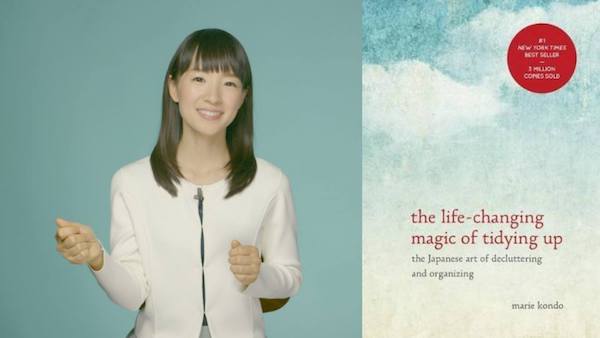ICA’s book club was launched with a book by best selling author, Marie Kondo, The Life-Changing Magic of Tidying Up.
 Why this book? Well, it seemed a perfect choice. Japanese born, Marie Kondo, is a highly successful author with a large global following and multi-million dollar business. Variously described as an expert, influencer, consultant or coach, Kondo has won world fame via celebrities like Ellen Degeneres and she even enjoys her own Netflix series. Her phenomenal success was built from her books about tidying which have been published in over 30 countries. These are impressive achievements, to say the least, and her work has rightly caused waves in the coaching industry.
Why this book? Well, it seemed a perfect choice. Japanese born, Marie Kondo, is a highly successful author with a large global following and multi-million dollar business. Variously described as an expert, influencer, consultant or coach, Kondo has won world fame via celebrities like Ellen Degeneres and she even enjoys her own Netflix series. Her phenomenal success was built from her books about tidying which have been published in over 30 countries. These are impressive achievements, to say the least, and her work has rightly caused waves in the coaching industry.
Kondo taps into a decluttering movement lead by a Millennial generation who seek deeper and richer experiences in a world obsessed with materialism. For me, however, I loved placing this book in a historical context. Kondo reminds me of the late Victorian writer, Ms Beeton, who wrote about maintaining a Victorian household in the 1860s in “Mrs Beeton’s Book of Household Management.” 1 Coincidentally, Mrs Beeton’s book also sold millions of copies worldwide and very recently enjoyed a reprint. The urgent desire to “get one’s house in order” spans many generations.
What did our book club members, who consist of professional coaches, think of the book? Most loved it and everyone found value in it. The book inspire a very honest and amusing sharing of photographs within our facebook community as people put words into action. Coaches documented their journey as they cleaned out household drawers, sheds and closets. I couldn’t help but observed that, although we were based in different countries, we all grappled with the issues of storage and found the idea of decluttering both appealing and satisfying.
Kondo’s book about decluttering, and our application of her method in our own lives, prompted a fascinating book club exchange traversing gender roles through to attachment and fear. We wondered how the book related to concepts of thrift, regifting or recycling and explored the role
of translation in nuance and meaning – the Japanese translation is Tokimeku ときめく, means “to flutter with a little thrill”). Of course, from a coaching perspective, we discussed how her approach could result in behaviour shift and lasting change. Opinions varied but, universally, coaches loved Kondo’s famous and powerful question “Does it spark joy?”
Does The Life-Changing Magic of Tidying Up belong in the top shelf of a coaches bookshelf? Interestingly, the answer came back as a firm “yes.” Professional coaches could see the value of her approach and perspective. The book may support a range of clients experiencing clutter in both work and home settings. Marie Kondo’s book not only sparked joy but it sparked a great book club – full credit to her!
Marie Kondo uses many coaching techniques in her approach to decluttering. In her tidying methodology. She starts by asking people why they want to tidy and holds up the mirror to the client’s stated goal. If you watch the netflix series, in her approach she never judges and she lets the client make decisions about what sparks joy for them and about the things that they want to discard and the things they want to keep. She uses the concept of gratitude and mindfulness when asking the reader or her clients to thank the item they are about to discard for the joy that it gave in the past. This helps to acknowledge the past but to look forward to a different future.
Marie Kondo sets up structure around the decluttering goal by chunking down the task into more manageable pieces and she sets homework for her clients creating an action and accountability framework which allow the decluttering process to move forward. It is worthwhile watching a few netflix episodes of her tidying show with coaching eyes to see how coaching techniques are employed alongside her practical tidying advice.